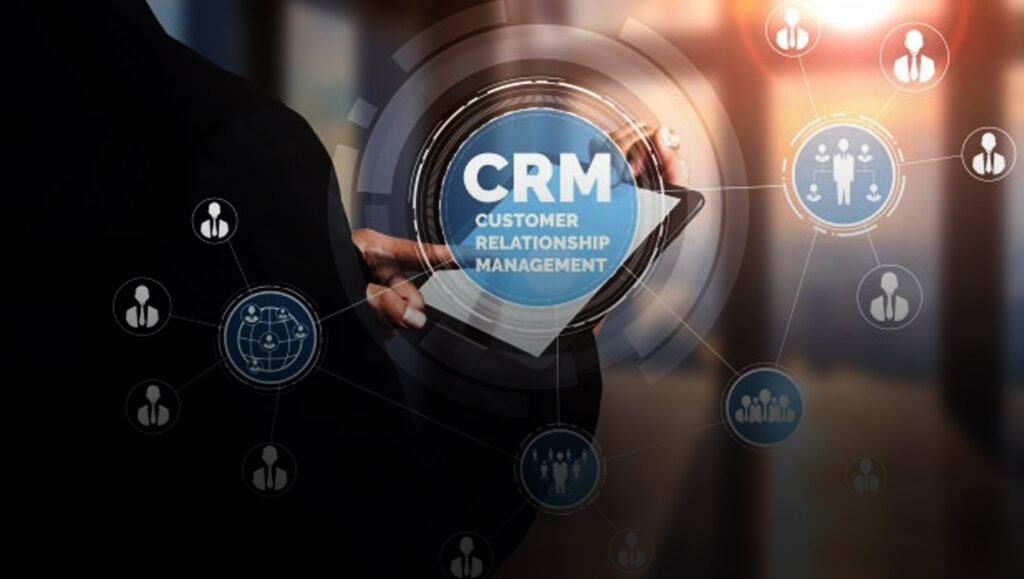B2B marketing and sales alignment can sometimes turn into a tedious, exasperating affair. But in the world of B2B marketing and sales, the right martech-salestech alignment along with the right alignment of strategies and goals can effectively help companies achieve better (and quicker!) results, thereby significantly reducing those levels exasperation!
When it comes to CRMs, these tools are meant to help both teams align their efforts and help improve company ROIs, However, some studies have in the past pegged CRM failure rates at 50%!
A CRM is meant to help teams align their customer outreach and campaign strategies, however, several teams have known to draw up against a blank wall by not optimizing the full capabilities of their CRM thereby leading to a waste of investment and effort.
Here’s how B2B marketing and sales can boost better results with their CRM and avoid the most common fails.
-
Choosing the Right CRM
The number of CRM technologies and the extensive capabilities offered by each vary. However, each of these tools are meant to specifically offer better results in one area of the overall marketing or sales sphere. For instance, one might be good when it comes to enhancing your existing sales prospecting efforts. Another might be great if you want to implement a more agile sales and marketing process. Choosing the right vendor is the basis of this activity.
The best way to do this is by identifying your need before you shortlist the vendors that offer similar features to match your business need. While budgets do play a key role in the choice of a tech stack, driving your investment decision by opting for the least expensive technology might lead to problems later on, especially if your marketing and sales plans involve multichannel campaigns to globally distributed target accounts.
Before making a final decision, try shortlisting a few CRMs and try their free version or demo packs. Involve other stakeholders in this decision-making process, the more comfortable every department is with a particular technology, the easier it will be to align processes and get better results.
-
Invest in Training and Development
Adopting the right sales technology is one part of the heavy lifting. The other is understanding how to utilize the technology’s capabilities to reduce time spent on repetitive tasks while also enhancing campaign efforts. Adopting a new technology for multiple departments without training them on how to use the tool has often been led to failures in CRM adoption and use. Most vendors will offer 24/7 live chat and training support, in other cases, technology sales and marketing teams from other companies will have active tutorials and How-tos or YouTube tutorials to refer to. Most new technologies like CRM tools are easy to implement and use. But if you are looking to achieve specific numbers from investing in a particular tech stack, knowing how to use every key feature of the tool to its full capability is crucial to helping achieve those profits.
Read More: Covid-19 Pandemic Impact: 5 Things Every Business Needs To Do
-
Align it to Changed Processes
Investing in a new CRM is not meant to only have IT set up the tool and forget about it. Sales and marketing have to realign their strategies and change how as a distributed team they plan to respond to customers with the help of the tool.
Investing in a CRM is a multi-department effort and requires multiple stakeholders to sign off on what needs to be automated and where teams need to manually step in to intervene in the process.
When a new technology is adopted by sales and marketing, both teams have to coordinate their activities, formulate how they intend to feed updates and notes on prospecting conversations into the system for everyone to be on the same page, always. Avoiding silos is integral to a better sales and marketing process!
Investing in a new technology automatically dictates that multiple departments understand how and when they need to contribute to the effective use of the tool.
Agile work processes and daily scrums are some of the most common ways for sales and marketing to try and align their most recent updates. In order for the company as a whole to speed delivery cycles, plan a more streamlined execution, and reduce risk – there has to be less confusion among multiple departments.
A new CRM is meant to bring in more responsibilities and change. Fundamentally, that’s because the tool is bringing in a lot of aligned information about your prospects, customers and target accounts into one place. This is why teams need to change their evaluation processes, tweak their communication plans, realign how they asses their business approach and sales and marketing technology investment analysis.
And all of this has to be done without affecting the functioning of existing projects!
-
Proactively Reducing Financial Losses From New Sales Tech Investments
Every department already has an existing scope of work and changes to processes and changes to a tech stack requires realignment. A CRM will have its own implementation approach and triggers, metrics and measurement areas built into the system. In order to minimize the financial losses when adding a new technology to the overall sales and marketing process, having a project manager to help coordinate the next steps to help everyone across departments fit their processes into the new tech parameters will help ensure a win-win from the tech investment point of view.
Ideally, this person will also be tasked with ensuring areas like the data migration from existing tools, the overall system integrations with other technologies, software customization and overall change management is handled seamlessly.
Read More: SalesTechStar Interview With Cody Liebman, VP Of Sales At AspireIQ
-
Goals, Goals and More Goals!
The successful implementation of any sales technology can be met by setting the right goals and deliverables. A lack of measurable goals will lead to incalculable ROIs and lead to a CRM fail. After identifying what your business needs a new CRM for, it is crucial to set up standard goals for sales, marketing and other involved teams before investing in a new tool. The simple installation of a new software will not make the team more productive or capable.
A systematic adoption process is integral to the success of the CRM in your company. A CRM is supposed to help multiple teams track a lead as it moves across stages, from being a contact to a MQL to a customer. The tool helps define the right stakeholder and helps you map every stage of this process to the right owner. But in order to create the most beneficial results for both, marketing – sales and the organization as a whole, the right plan has to be put in place.
In the end, a tighter business process will also help the company create and establish a better brand image in front of prospects and customers.
Are you ready to strengthen your marketing, sales and customer relationships with your CRM?





















